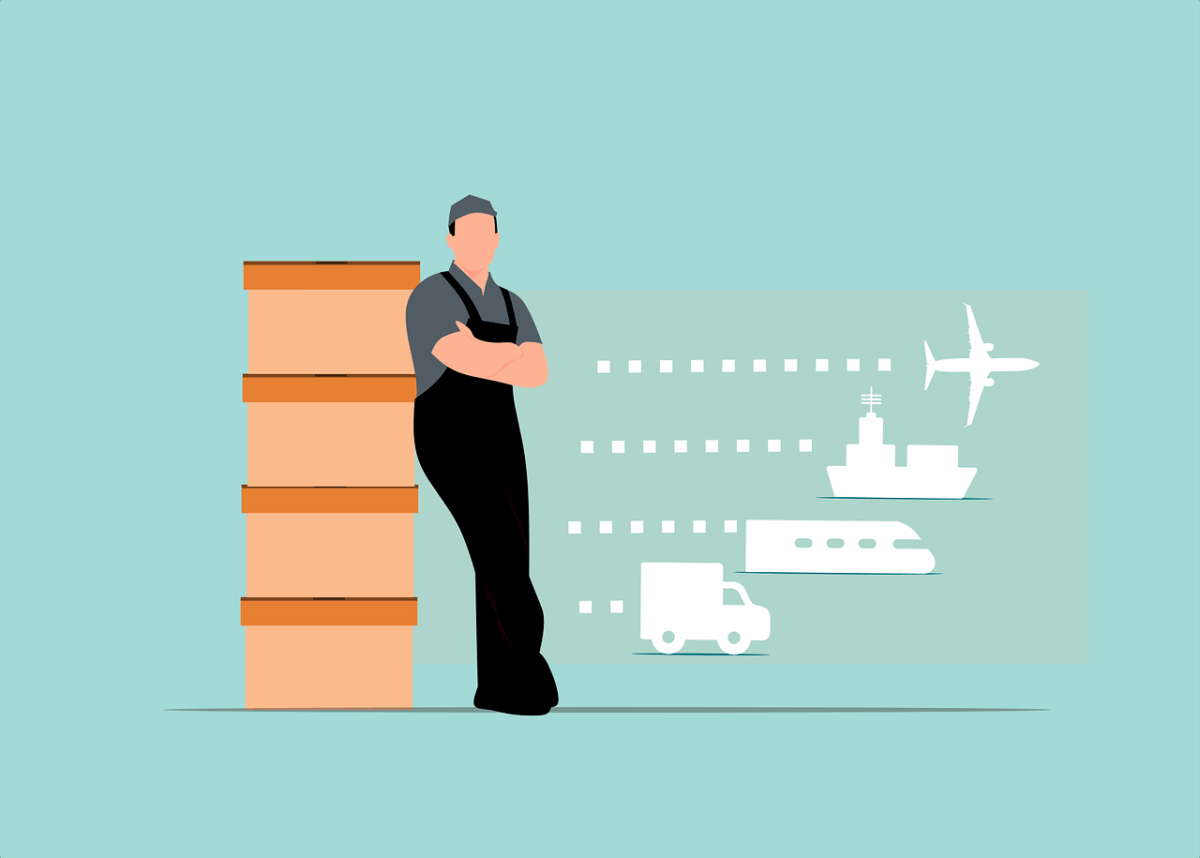Establishing reliable provenance and origin verification within product networks demands rigorous trial implementations of traceability mechanisms. Testing decentralized ledger technologies alongside sensor-integrated monitoring offers quantifiable improvements in data accuracy for each node along the distribution sequence. Laboratory-style evaluations demonstrate how immutable records reduce discrepancies and unauthorized alterations, enhancing accountability across multi-tiered logistics frameworks.
Implementing layered tracking protocols reveals critical insights into bottlenecks and information gaps affecting end-to-end visibility. Experimental deployment of IoT-enabled devices combined with cryptographic timestamping allows systematic validation of asset movements, providing granular evidence about location and handling conditions. These iterative trials enable refinement of data capture methods that directly impact authenticity verification and regulatory compliance.
Comparative analysis between centralized databases and distributed registries highlights significant variations in reliability when tracing product lineage through complex supply routes. Controlled experiments focusing on data synchronization latency, fault tolerance, and participant trust models yield actionable metrics to optimize chain integrity. Exploring hybrid architectures further enriches understanding of balancing transparency with operational efficiency, guiding future investigative pathways in provenance assurance research.
Supply Chain: Transparency Tracking Experiments
The integration of blockchain technology into commodity logistics has demonstrated measurable improvements in verifying authenticity and ensuring complete provenance records. Practical trials deploying distributed ledger frameworks enable immutable documentation of an item’s origin, allowing stakeholders to trace each transaction and transformation throughout the distribution network. These initiatives systematically enhance the visibility and reliability of product histories, mitigating risks associated with counterfeit goods and unauthorized substitutions.
Recent pilot projects employ smart contracts combined with IoT sensor data to establish real-time monitoring mechanisms within the delivery process. By embedding cryptographic proofs at critical junctures, these tests validate chain-of-custody events without reliance on centralized intermediaries. Such methodologies provide granular insights into environmental conditions, location changes, and handling practices, facilitating a robust verification system that can adapt dynamically across diverse industries.
Methodologies for Provenance Verification Using Blockchain
A common experimental protocol involves assigning unique digital identifiers linked to physical assets at their point of manufacture. This tokenization creates a cryptographically secured digital twin that records every subsequent interaction in an append-only ledger. Researchers have explored various consensus algorithms–Proof of Authority (PoA) for permissioned networks or Proof of Stake (PoS) variants–to optimize performance while maintaining trustworthiness. The result is a tamper-resistant history that confirms an item’s origin and transit pathway with high fidelity.
- Case Study: A luxury goods manufacturer implemented a blockchain-based system to authenticate handbags by registering serial numbers combined with RFID scans at factory checkpoints.
- Experimental Finding: Data indicated over 95% accuracy in detecting fraud attempts when compared against traditional paper documentation approaches.
The application extends beyond luxury products; agricultural supply lines have also benefited from traceability implementations that record soil conditions, harvest dates, and storage environments through interconnected sensors feeding data onto distributed ledgers. This layered approach empowers consumers and regulators alike to confirm compliance with safety standards and ethical sourcing policies.
Cumulatively, these explorations substantiate that leveraging decentralized registries improves accountability among participants while fostering transparent data sharing without compromising proprietary information. Future research avenues may focus on interoperability between distinct blockchain platforms to facilitate seamless provenance tracking across international borders and heterogeneous logistical ecosystems.
Implementing Blockchain for Traceability
Leveraging blockchain technology to establish immutable records of product origin enhances verification processes across distribution networks. By embedding data at each node, the system constructs a sequential ledger that documents the provenance of goods, enabling granular insight into their lifecycle. Entities can utilize cryptographic proofs to confirm authenticity and reduce counterfeiting risks without relying on centralized authorities.
Applying distributed ledger frameworks to logistical flows allows continuous validation of asset movement from raw material extraction through manufacturing to retail endpoints. This approach not only secures data integrity but also facilitates real-time audits, encouraging accountability among participants. Recent trials demonstrate that integrating smart contracts automates compliance checks, triggering alerts when deviations occur in handling or storage conditions.
Experimental Approaches to Provenance Recording
One effective methodology involves tagging items with unique digital identifiers linked to blockchain entries capturing timestamped events. For instance, agricultural produce can be assigned QR codes reflecting soil quality metrics and harvesting dates recorded on-chain. Researchers conducting pilot projects observed a 35% increase in consumer confidence when such detailed historical data became accessible via mobile applications.
A comparative study between traditional centralized databases and blockchain-based registries revealed significant improvements in tamper resistance under simulated cyberattack scenarios. The decentralized nature distributes trust among network participants, mitigating single points of failure. Trials incorporating IoT sensors feeding environmental parameters directly into the ledger have proven successful in maintaining continuous oversight of sensitive shipments like pharmaceuticals.
- Stepwise documentation: recording every transfer event with cryptographic hashes ensures traceability fidelity.
- Consensus protocols: validating transactions through network agreement prevents fraudulent alterations.
- Layered permissions: controlling access rights maintains privacy while allowing selective transparency.
The integration process requires careful calibration of on-chain and off-chain data management to balance scalability with detail richness. Experimental deployments often leverage hybrid architectures where bulk sensor data is stored externally while critical checkpoints anchor hashes on the blockchain, preserving auditability without overwhelming transaction throughput.
An ongoing challenge lies in harmonizing standards across heterogeneous systems participating in value transfer ecosystems. Collaboration protocols must evolve experimentally to accommodate interoperability without compromising ledger security properties. Encouraging multidisciplinary research combining cryptography, supply logistics, and sensor technologies will push forward practical implementations capable of robust origin authentication and lifecycle monitoring.
This scientific pursuit invites further investigation into optimizing consensus algorithms for high-throughput environments while maintaining decentralization guarantees essential for trustworthy recordkeeping. Exploring modular smart contract templates can facilitate customizable provenance solutions adaptable to diverse commodity types and regulatory requirements. The experimental mindset fosters incremental advancement toward fully auditable, end-to-end verification infrastructures grounded in blockchain innovation.
Designing Token Incentives Models
To establish effective token incentive models that enhance provenance and traceability within decentralized networks, one must prioritize the direct correlation between token rewards and verifiable data entries on the ledger. By linking incentives to the authenticated origin of assets recorded immutably in a distributed ledger, systems can encourage participants to submit accurate and timely information regarding product lifecycle events. This approach minimizes fraudulent inputs while reinforcing the authenticity of each transaction node, creating an environment where every contribution is both measurable and valuable.
Experimental deployments show that integrating multi-layered validation mechanisms–such as cryptographic proofs combined with timestamped data checkpoints–strengthens confidence in item lineage across interconnected nodes. For instance, pilot projects using tokenized reward structures tied to unique asset identifiers demonstrate increased user engagement in maintaining complete historical records. These trials reveal that incentivization based on clear trace origins accelerates data transparency by motivating stakeholders to verify and update chain entries rigorously.
Methodologies for Quantifying Provenance Rewards
Constructing incentive algorithms requires defining precise criteria that quantify contributions toward maintaining an unbroken record of origin verification. A practical model involves assigning variable token yields proportional to the depth and accuracy of tracked events–for example:
- Initial registration bonus: Tokens awarded for submitting first-hand proof of creation or acquisition.
- Intermediate validation increments: Smaller, recurring tokens for confirming or cross-referencing prior entries within the ledger.
- Anomaly detection premiums: Elevated rewards when participants identify inconsistencies or counterfeit attempts impacting authenticity.
This tiered system incentivizes continuous participation throughout the lifecycle, promoting sustained chain integrity rather than sporadic input.
The combination of these reward layers stimulates a collaborative ecosystem where actors are motivated not only by immediate gains but also by long-term benefits stemming from reliable data provenance. As demonstrated in case studies involving agricultural produce tracking via blockchain tokens, such models have reduced information asymmetry among suppliers and consumers while fostering trust through enhanced visibility into product origins. Encouraging iterative contributions through well-calibrated incentive structures transforms passive observers into active custodians of ledger veracity.
Integrating IoT Data with Crypto
To enhance provenance verification and data integrity, combining IoT sensor inputs with blockchain records enables precise item origin documentation. Each sensor reading, such as temperature or location, can be hashed and appended to a decentralized ledger, preserving immutability while facilitating comprehensive lineage analysis. This approach offers a robust method to confirm authenticity throughout the entire distribution network.
Deploying Internet of Things devices alongside distributed ledger technology allows for near-real-time observation of goods movement and condition. For instance, RFID tags coupled with environmental monitors feed continuous streams of information into cryptographic ledgers, establishing an auditable history that resists falsification. These layered mechanisms strengthen confidence in product genuineness from production to delivery.
Technical Integration Strategies and Protocols
Implementing effective synchronization between IoT outputs and blockchain entries requires standardized communication protocols such as MQTT or CoAP combined with smart contract logic on platforms like Ethereum or Hyperledger Fabric. Data collected from sensors undergoes preprocessing before creating cryptographic proofs (e.g., Merkle trees), which are then anchored on-chain to prevent tampering. Experimentation confirms that batching sensor data optimizes throughput without compromising granularity.
A practical case study involves cold chain logistics where temperature-sensitive pharmaceuticals are monitored continuously by IoT-enabled thermometers. Each recorded value is timestamped and encrypted before submission to a permissioned blockchain network. This setup not only guarantees data fidelity but also facilitates automated alerts via smart contracts when predefined thresholds are breached, thereby enabling rapid corrective actions.
The experimental fusion of decentralized registries with device-generated metadata opens new avenues for validating product lifecycle events. By linking unique identifiers embedded in physical assets with their corresponding digital twins on blockchain ledgers, stakeholders gain unprecedented visibility into material provenance and handling conditions. Such integration supports dynamic audits and regulatory compliance through verifiable evidence trails.
This layered architecture demonstrates how integrating connected device telemetry with cryptographically secured ledgers can fundamentally improve item traceability frameworks. Ongoing research explores optimizing consensus algorithms to handle high-frequency sensor updates without sacrificing decentralization principles or transaction finality times.
The intersection of cyber-physical systems with distributed ledger technologies invites further investigation into scalable models that preserve data privacy while maintaining transparency across multiple participants. Experimental deployments in agro-food sectors reveal potential cost reductions linked to fraud prevention and quality assurance enabled by immutable record-keeping tied directly to real-world measurements captured automatically by embedded devices.
Conclusion: Measuring Transparency Impact Metrics
Quantifying the influence of authenticity verification, provenance validation, and origin authentication requires precise metrics that reflect the integrity of the entire logistics continuum. Experimentation with traceability protocols on distributed ledgers reveals measurable improvements in data immutability and real-time verification rates, directly enhancing confidence in product lifecycle narratives.
For instance, leveraging cryptographic proofs to confirm origin points enables stakeholders to detect anomalies that compromise trust, while continuous monitoring of ledger entries exposes supply irregularities with granular timestamp accuracy. These findings suggest that embedding advanced tracking mechanisms not only fortifies transparency but also optimizes operational responses by reducing information asymmetry.
Key Technical Insights and Future Directions
- Authenticity metrics: Utilizing zero-knowledge proofs and decentralized identifiers (DIDs) can quantify validation success without exposing sensitive data, creating a balance between privacy and verifiability.
- Provenance analytics: Chain-of-custody records analyzed through on-chain event sequencing provide statistical models predicting disruption probabilities and bottleneck localization.
- Origin verification: Geo-tagged blockchain anchors enable immutable source certification, critical for high-value or regulated goods where origin misrepresentation results in compliance breaches.
- Traceability enhancement: Layered smart contract frameworks facilitate automated audits by cross-referencing multi-party attestations, increasing systemic accountability across interconnected nodes.
The trajectory of these methodologies points toward integrating machine learning algorithms trained on blockchain datasets to forecast vulnerabilities and optimize resource allocation dynamically. Furthermore, interoperability standards will be pivotal for harmonizing disparate ledger systems, creating unified ecosystems where transparency metrics become universally comparable.
Encouraging experimental replication through open-source testbeds fosters iterative improvement cycles and collective validation of metric reliability. By systematically refining measurement approaches grounded in cryptographic assurances and decentralized consensus mechanics, the community advances beyond theoretical constructs into actionable insights shaping resilient supply networks worldwide.








